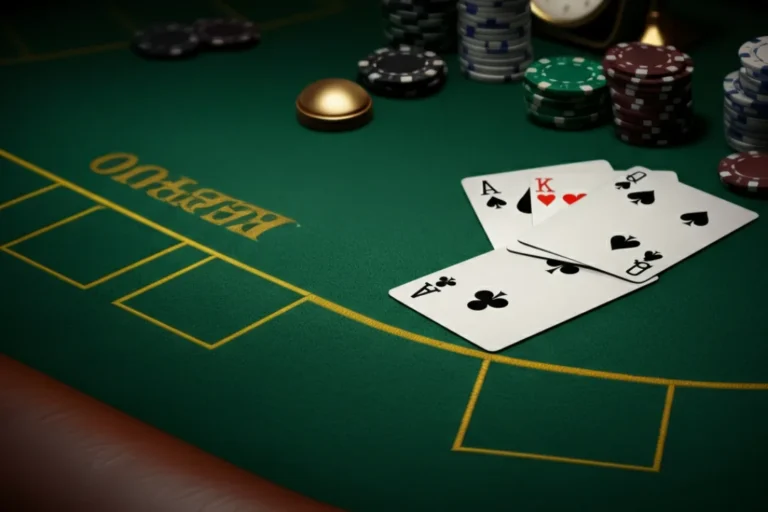Making the jump from cash games to multi-table tournaments opens up a whole new world of strategy. Navigating the shifting dynamics, growing blinds, and various stages means you can’t just rely on your standard poker skills—you need to adapt on the fly and manage your stack like a pro. In this guide, we’re diving into practical tournament tips, hands-on examples, and tournament strategies to help you play with more confidence and make your next deep run feel less like luck and more like skill.
(For a deeper dive on tournament math and player mindset, check out Upswing Poker’s Ultimate Guide to Tournament Poker.)
Understanding Key Tournament Formats
Picking the right tournament to play is your first big choice, and each format comes with its own unique twists. Knowing what you’re getting into can have a huge impact on your chances of cashing or going deep. Here’s a quick breakdown of a few of the most popular formats:
Freezeout Tournaments
In freezeouts, once your stack is gone, you’re out for good—no do-overs. Every decision matters, and you’ll notice players protect their chips with more care. It’s all about smart risk management and choosing your moments.
Rebuy & Add-on Events
Rebuy tournaments shake things up by letting you buy back in if you bust (usually during the first few levels). There are often add-on options as well when the rebuy period closes. These formats encourage early fireworks—you’ll see plenty of wild hands as players try for big stacks before play tightens up later.
Bounty & Progressive Knockout (PKO)
Bounty tournaments reward you with extra cash every time you send an opponent packing. If you’re playing a PKO, your own bounty grows with each knockout, painting a target on your back. Chasing bounties is exciting and sometimes more lucrative than purely aiming for the final payout spots.
Bankroll Management and Late Registration Tips
Keeping your bankroll healthy is the unsung hero of any serious tournament grind. Many experienced players recommend having around 100 buy-ins available for the stakes you play—this helps smooth out those unpredictable downswings. Managing your money well means you can weather losing streaks and stay in the game long term.
Late registration has changed tournament strategy a lot. Jumping in late means you might start short-stacked, but you also avoid the crazy early levels and get closer to the prize money faster. Weigh the pros and cons based on your comfort with short-stack play and your goals for each event.
Adapting to Stack Sizes
Your chip stack is your best friend—or worst enemy—during a tournament. Adjusting your game to your stack size is a big part of successful event play:
- Deep stacks (75+ big blinds): Get creative and play more speculative hands like suited connectors. You can see more flops and take calculated risks, as you have more room to maneuver.
- Medium stacks (30–70 big blinds): It’s time to pick your spots carefully and ramp up the aggression when you see a chance to take down pots uncontested.
- Short stacks (under 30 big blinds): Keep things simple. Push or fold becomes your mantra—know the right spots and hands using push/fold charts to maximize your survival chances.
Table Position and Preflop Planning
Where you sit compared to the dealer button affects almost every hand you play. Acting after your opponents puts you in the driver’s seat, allowing you to gather information before making critical choices. Early position? Play tighter and stick to solid hands. In late position, especially on the button, you can open up your range and pressure the blinds.
The Power of the Button
Holding the button in a hand gives you unmatched leverage over your tablemates. You get to see how everyone acts before making your move, so don’t waste the opportunity—steal blinds and force players out of their comfort zones.
Beating the Bubble and ICM Decisions
If you’ve ever played a tournament, you know the tension that comes when the bubble approaches—that spot where the next person out gets nothing and everyone else gets paid. Big stacks often become aggressive, trying to exploit those fighting just to sneak into the money.
ICM, or the Independent Chip Model, puts a real-world value on your chips based on payout jumps. Having a good understanding of ICM can help you avoid risky plays at crucial stages and recognize when surviving is worth more than taking a marginal flip.
Using Table Image and Exploiting Opponents
People remember how you play, and you should use that to your advantage. If you’re seen as tight, you can pull off more bluffs. If you’ve been wild, your big hands might finally get called down. Watch the other players, too—if someone can’t resist calling big bets or folds to three-bets every time, adjust your approach and go after them.
Endgame Tactics: Final Table and Heads-Up
Making the final table is always a rush, but there’s still work to do. The pressure from ICM is highest here, and finding that balance between aggression and caution is the mark of a real tournament grinder. Target opponents who are just trying to move up in payouts, but don’t let them catch you getting reckless.
Once you reach heads-up, your strategy shifts again. Open up your range, play lots of pots, and keep the pressure on your opponent—they’ll often feel the heat if you keep attacking relentlessly.
You may also read: Finding the Best Poker Bonuses in 2025


